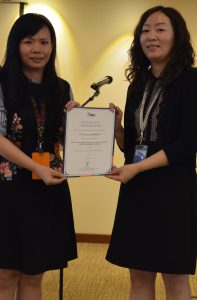[fusion_builder_container hundred_percent=”no” equal_height_columns=”no” menu_anchor=”” hide_on_mobile=”small-visibility,medium-visibility,large-visibility” class=”” id=”” background_color=”” background_image=”” background_position=”center center” background_repeat=”no-repeat” fade=”no” background_parallax=”none” parallax_speed=”0.3″ video_mp4=”” video_webm=”” video_ogv=”” video_url=”” video_aspect_ratio=”16:9″ video_loop=”yes” video_mute=”yes” overlay_color=”” overlay_opacity=”0.5″ video_preview_image=”” border_size=”” border_color=”” border_style=”solid” padding_top=”” padding_bottom=”” padding_left=”” padding_right=””][fusion_builder_row][fusion_builder_column type=”1_1″ layout=”1_1″ background_position=”left top” background_color=”” border_size=”” border_color=”” border_style=”solid” border_position=”all” spacing=”yes” background_image=”” background_repeat=”no-repeat” padding=”” margin_top=”0px” margin_bottom=”0px” class=”” id=”” animation_type=”” animation_speed=”0.3″ animation_direction=”left” hide_on_mobile=”small-visibility,medium-visibility,large-visibility” center_content=”no” last=”no” min_height=”” hover_type=”none” link=””][fusion_text] Ask any medical practitioner, he or she will tell you that with every treatment or procedure, there are risks, and this also applies to acupuncture. Acupuncture requires a skillful acupuncturist to apply needling that produces a great therapeutic effect without causing any significant adverse effect on the patient. 24 June 2019 – The IMU Chinese Medicine Department invited a renowned lecturer from the Shanghai University of Chinese Medicine, Guo Chun Xia, to give a public talk on “Clinical Anatomy of Dangerous Acupuncture Points” in the Senate Room at IMU. Due to limited seats, the talk only accepted a total of 85 participants from undergraduate students to healthcare practitioners as well as acupuncture enthusiasts.  During the two-hour talk, Ms Guo shared her knowledge and experience, covering several dangerous acupuncture points such as BL1 JingMing (near eyeball), GV16 FengFu (near brain stem), GB21 JianJing (near the lung), BL23 ShenShu (near the kidney) etc. comprehensively with the aid of photos from dissected cadavers and pictures from the atlas of anatomy. The audience was very attentive during the talk, although most of whom were just off from work. Many were seen taking photos of the slides shown while some busy jotting down notes. “In the insertion of FengFu point, the tip of the needle should be pointing towards the chin where the patient’s head is slightly flexed forward. FengFu is a very useful and effective point provided that the direction and depth of the needle is well-mastered. Normally, it is safe to insert the needle within the depth of 1.2 cm,” stated Ms Guo. The two-hour talk concluded with the chairperson of the organising committee for this public talk, Dr Ong Siew Siew, presenting a certificate and token of appreciation to Ms Guo. At the end of the evening, the attendees look happy and satisfied with the talk. A few of them even stayed back to have further academic discussions with Ms Guo. “It was a fruitful evening. I’m glad I came,” said Yong Jia Ying, a Chinese Medicine undergraduate student. Written by Lim Xing Ying Reviewed by Chep Lee Lu Siang [/fusion_text][/fusion_builder_column][/fusion_builder_row][/fusion_builder_container]
During the two-hour talk, Ms Guo shared her knowledge and experience, covering several dangerous acupuncture points such as BL1 JingMing (near eyeball), GV16 FengFu (near brain stem), GB21 JianJing (near the lung), BL23 ShenShu (near the kidney) etc. comprehensively with the aid of photos from dissected cadavers and pictures from the atlas of anatomy. The audience was very attentive during the talk, although most of whom were just off from work. Many were seen taking photos of the slides shown while some busy jotting down notes. “In the insertion of FengFu point, the tip of the needle should be pointing towards the chin where the patient’s head is slightly flexed forward. FengFu is a very useful and effective point provided that the direction and depth of the needle is well-mastered. Normally, it is safe to insert the needle within the depth of 1.2 cm,” stated Ms Guo. The two-hour talk concluded with the chairperson of the organising committee for this public talk, Dr Ong Siew Siew, presenting a certificate and token of appreciation to Ms Guo. At the end of the evening, the attendees look happy and satisfied with the talk. A few of them even stayed back to have further academic discussions with Ms Guo. “It was a fruitful evening. I’m glad I came,” said Yong Jia Ying, a Chinese Medicine undergraduate student. Written by Lim Xing Ying Reviewed by Chep Lee Lu Siang [/fusion_text][/fusion_builder_column][/fusion_builder_row][/fusion_builder_container]


No approved comments.